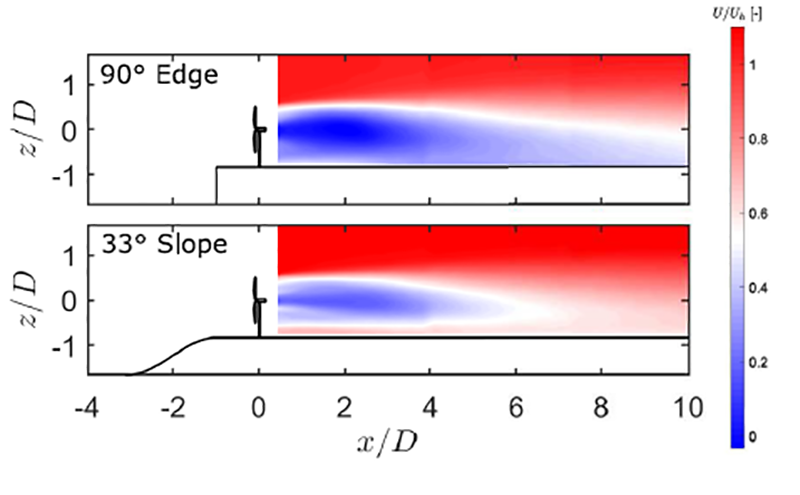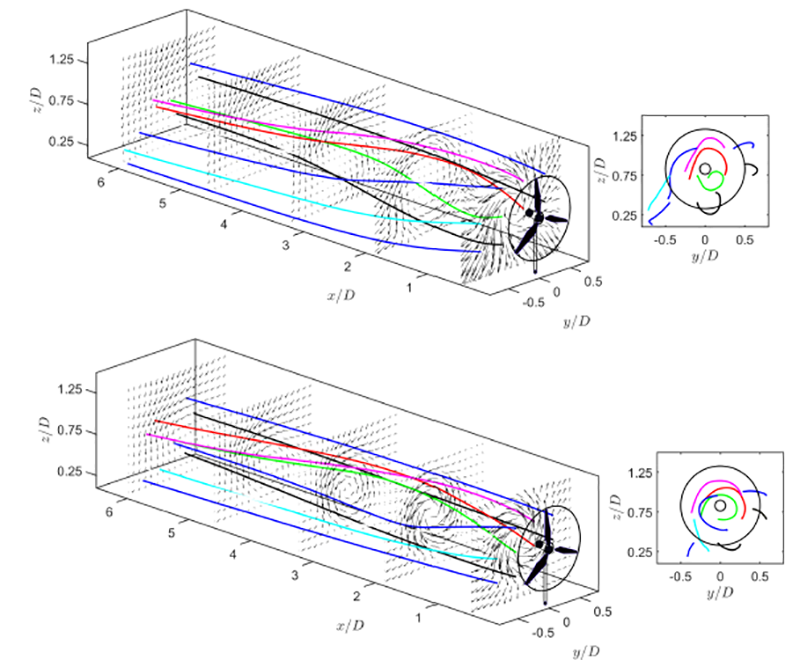At WiRE, laboratory-scale experiments are performed on especially designed wind turbine models in a boundary-layer wind tunnel using state-of-the-art flow measurement techniques. Contrary to field measurements, wind tunnel experiments offer full control over the flow conditions and experiments can be designed to study different flow problems in a systematic fashion.
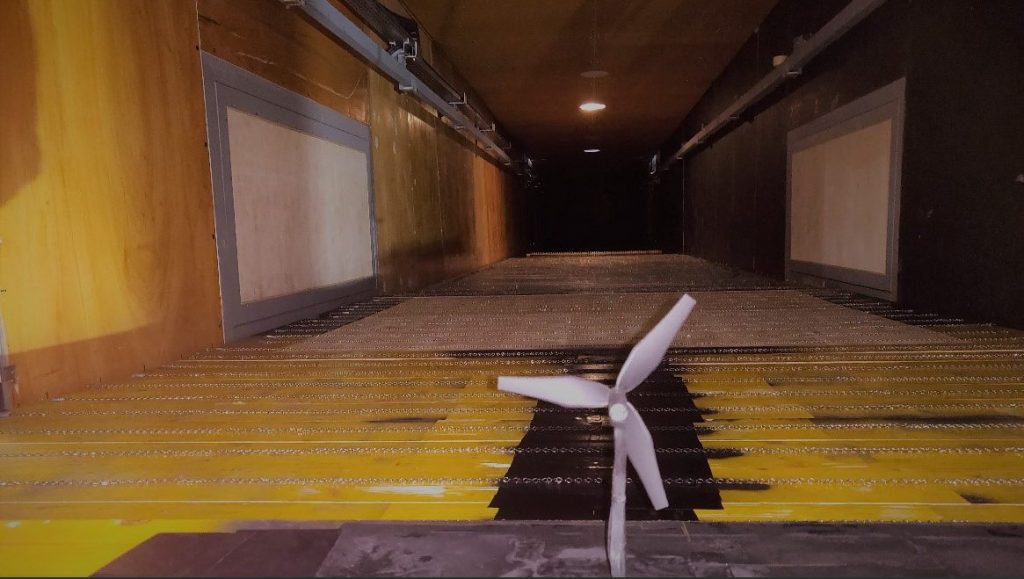
Recent Research
Ongoing experimental research at WiRE involves an array of topics which have gained popularity within the wind energy community in recent years. These include (but are not limited to) active yaw control, vertical axis wind turbine wakes and wind turbine wakes in topography.
Active Yaw Control
Active yaw control has emerged as a promising strategy for improving the power yield on a wind farm level. By actively yawing a wind turbine away from the incoming wind, the wake is deflected away from the downwind turbines. At WiRE, we perform wind tunnel experiments on the power performance and wakes of wind farms subjected to this strategy. These experiments provide new insights into the flow physics of the wake deflection and serve as a basis for theoretical models. Using these experiments, our experts have also developed yaw optimization algorithms for wind farm control.
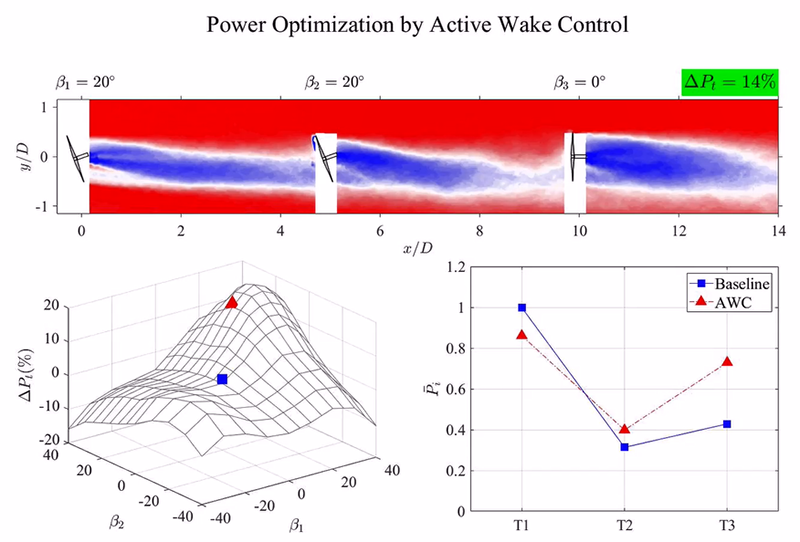
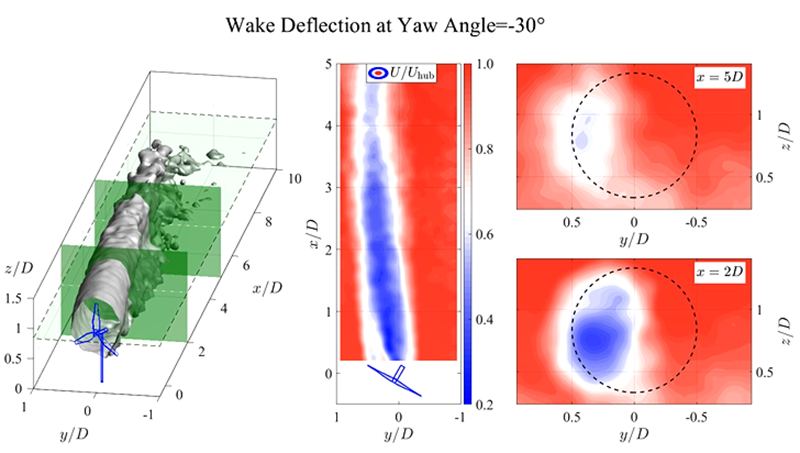
VAWT Wakes
Vertical axis wind turbines have been underexplored historically. These turbines have, however, regained interest from the wind energy community due to their potential advantages over their horizontal axis counterparts. Our research focuses on experimental investigation of VAWT wakes under variety of different operational conditions and development of analytical models for the wake of these turbines.
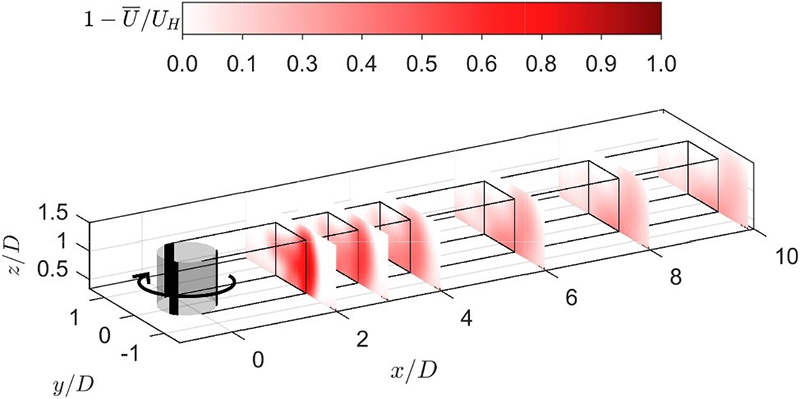
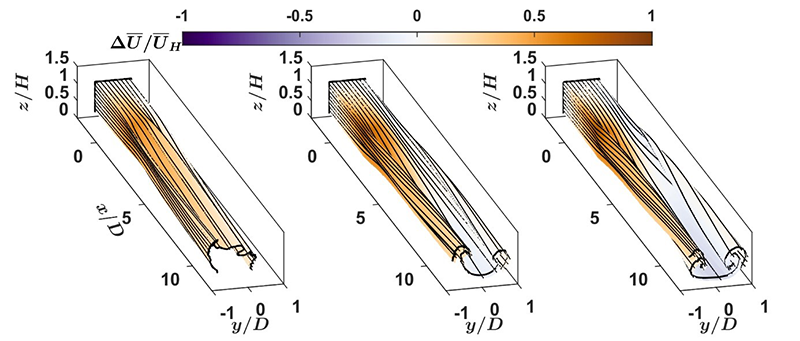

Wind Turbine Wakes in Topography
Onshore wind energy is one of the cheapest available energy resources in the world. Wind turbines on land are often sited on complex topographical features. The choice of topography as a site is made either to take advantage from the flow speed-up across hills or due to a lack of better alternative. Flow over topography is highly dependent on the geometrical details of the terrain and complex flow features, such as flow recirculation, lee waves are a common observation. The interaction of wind turbines and their wakes with these complex flow characteristics is far from understood.
Our research focuses on unravelling the complex nature of physics that arises from the interaction of flow with wind turbines in topography.
